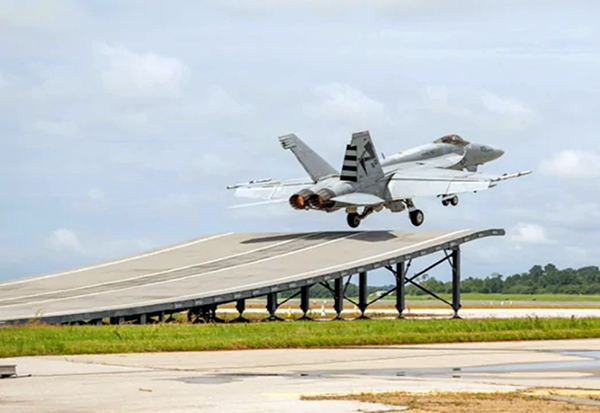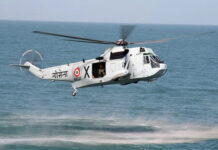The choice of a carrier-borne fighter aircraft for the Indian Navy to operate from the deck of INS Vikrant has narrowed down to Rafale-Marine and Boeing F/A-18E/F Block III Super Hornet. Trials have been completed. Staff evaluation is in progress. Indications are that it will be an Inter-Governmental Agreement (IGA) purchase.
Ultimately, the aim is indigenisation. A Twin-Engine Deck Based Fighter (TEDBF) is being developed but it will take some time. In the interim, the Navy is looking for an aircraft from among the two to meet their requirements.
The procurement size was earlier 57 twin-engine carrier fighters, which is now set to be downsized to around 26, including a few twin-seater trainer variants.
IAF’s MRFA Acquisition
On the Multi-Role Fighter Aircraft acquisition for the Indian Air Force – the IAF has already received responses from multiple vendors to its RFI. The top contenders for the multi-billion dollar deal include Lockheed Martin’s F-21, Boeing’s F/A-18, Dassault Aviation’s Rafale, the Eurofighter Typhoon, Russian aircraft MiG 35 and Swedish aerospace giant Saab’s Gripen jet.
In April 2019, the IAF issued an RFI (Request for Information), or initial tender, to acquire 114 jets at a cost of around USD 18 billion.
The winner of the Indian Air Force’s mega project to procure 114 Multi-Role Fighter Aircraft (MRFA) will have to ensure the transfer of technology as it would be implemented under the framework of the ‘Make-in-India’ initiative
The entire process will be executed under the provisions of the DAP (Defence Acquisition Procedure) 2020, the selected OEM (Original Equipment Maker) will have to comply with India’s requirements of transfer of technology and Make-in-India that would add to our indigenous fighter aircraft manufacturing capability.
The number of squadrons of the IAF is going down gradually because of the phasing out of old aircraft. The IAF is not going to reach the sanctioned strength of 42 fighter squadrons in the next 10-15 years. Hence, a two-pronged strategy has being adopted towards maintaining the IAF’s strength that involves induction of new generation platforms and up-gradation of the existing fleet.
Procurement of 114 jets under the MRFA project and acquisition of 83 Light Combat Aircraft (LCA) Tejas will help the IAF significantly enhance its combat prowess.
India is also working on an ambitious USD 5 billion project to develop a fifth-generation medium-weight deep penetration fighter jet to significantly bolster its air power capability.
IAF’s Current Fleet
Presently, India operates six kinds of fighter aircraft – Su-30MKI, Rafale, Tejas, MiG-29, Mirage 2000 and MiG-21. Considering MiG-21’s frequent accidents, the IAF is expected to decomm-ission the ageing aircraft by 2025. So effectively, we have five types of fighter jets.
Among all, Sukhoi Su-30MKI is the largest and primary fleet of the Indian Air Force. With a total of 284 operational numbers, the Russia-made Sukhoi is an air superiority fighter with additional air-to-ground strike capability.
Next is the Jaguar (Shamsher). IAF has 139 Jaguars. Attached with EL/M-2052 AESA radars and new avionics, Jaguar is considered a ground attack specialized fighter jet.
Dassault Mirage 2000 (Vajra), is the fourth generation single-engine multi-role fighter jet. Currently, about 50 different variants of Mirage are being operated by IAF. In February 2019, Mirage-2000 fighter jets were used to hit terror camps in Balakot inside PoK. Attached with Israeli laser-guided SPICE bombs, the Mirage-200 is a highly reliable aircraft for India.
With all these fourth-generation fighter jets, India now has inducted 36 Dassault Rafales – A French twin-engine canard delta wing multirole fighter jet is capable of performing air supremacy, interdiction, aerial reconnaissance, ground support, in-depth strike, anti-ship strike, and nuclear deterrence missions.


















